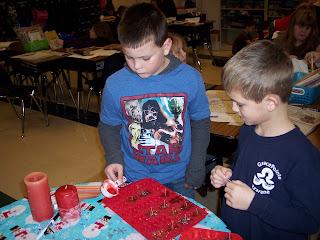Materials:
- an old crockpot
- old candles to melt down (great way to recycle)
- candle wicks
- molds
- optional glitter to sprinkle on top
- an old measuring cup for pouring the wax into molds
- old spoon(s) for stirring
Directions:
- Place the crockpot on high.
- Place old candles in the crockpot to melt. It can take up to an hour to melt larger candles.
- Scrape soft wax off the candles to help the melting process.
- Once there is enough wax melted, you can start pouring the wax into molds.
- When the candles start to get stiff, add the wick and optional glitter. You can reuse the wicks from the melted candles, but will also need to buy some at a craft store.
- Once the candles have cooled in the molds (about 30 minutes), they pop right out of the rubber molds.
Another great Wonder to visit as a follow-up to this craft is Wonder #276 Does Matter Really Matter? to help explain the solid and liquid of this activity.






